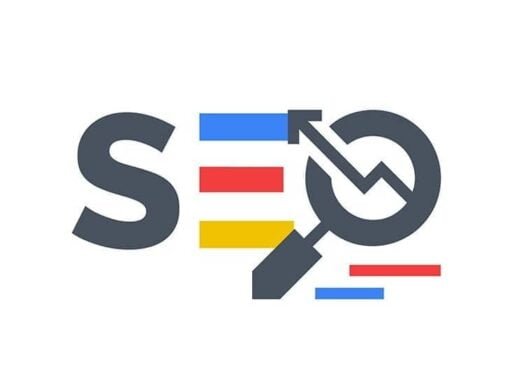Welcome to our guide on how to conduct an SEO audit of your website. If you want to optimize your website for search engines and improve your online visibility, an SEO audit is a crucial step. By evaluating various aspects of your site, you can uncover errors that may be impacting your search engine rankings and identify opportunities for optimization.
During an SEO audit, you will examine important factors such as indexing and crawlability, user experience, site architecture, competitor benchmarking, keyword research, on-page SEO, and your backlink profile. By thoroughly analyzing these areas, you can ensure that your website is fully optimized for search engines and maximize your chances of attracting organic traffic.
Key Takeaways:
- Conducting an SEO audit helps uncover errors and opportunities for optimization.
- Areas to focus on during an SEO audit include indexing, user experience, and keyword research.
- Effective SEO audits rely on tools like Google Search Console and Semrush.
- Fixing indexing issues, checking for duplicate versions of your site, and running a site crawl are essential steps in the audit process.
- Ensuring mobile-friendliness and analyzing your site’s speed are also vital for optimization.
What Is an SEO Audit?
An SEO audit is a comprehensive evaluation of your website’s optimization for search engines. It involves analyzing various aspects of your site to identify errors that may be hindering your search engine rankings and uncover opportunities for improved visibility. Think of an SEO audit as a “health check” for your website’s performance in search engine results.
The Importance of SEO Audit
An SEO audit is essential for ensuring that your website is fully optimized for search engines. It helps you understand how well your site is performing and identifies areas that need improvement to enhance your website’s visibility and user experience. By conducting regular SEO audits, you can stay ahead of your competitors and attract more organic traffic to your site.
Key Areas Covered in an SEO Audit
An SEO audit typically covers several key areas of website optimization:
- Indexing and Crawlability: Determine if search engines can effectively crawl and index your website.
- User Experience: Evaluate how users navigate and interact with your site for a seamless experience.
- Site Architecture: Assess the organization and structure of your website’s pages and content.
- Competitor Benchmarking: Analyze your competitors’ SEO strategies and performance to identify areas for improvement.
- Keyword Research: Identify the most relevant keywords for your target audience and optimize your content accordingly.
- On-Page SEO: Optimize individual web pages to improve their visibility in search engine results.
- Backlink Profile: Evaluate the quality and quantity of external links pointing to your website.
By conducting a thorough analysis of these areas, an SEO audit helps you identify and address any issues that may be impacting your website’s performance in search engine rankings.
SEO Audit Tools
To conduct an effective SEO audit of your website, you need access to the right tools that provide accurate data and insights. Two essential tools for a comprehensive SEO audit are Google Search Console and Semrush. These tools help you analyze various aspects of your website’s performance and identify areas for improvement.
Google Search Console
Google Search Console is an invaluable tool that provides you with essential data about your website’s presence on Google. With it, you can monitor and troubleshoot issues related to indexing, crawling, and search appearance. The tool offers various dashboards and reports that give you insights into how Google perceives and ranks your website.
Semrush
Semrush is an all-in-one SEO toolset that offers a comprehensive look at your website’s performance. It provides valuable data and insights to help you optimize your website for search engines. Semrush allows you to analyze your website’s organic traffic, backlink profile, keyword rankings, and more. It also helps you identify areas for improvement in crucial SEO aspects like on-page optimization and competitor analysis.
By signing up for a free Semrush account, you can follow along with the steps in this guide and make the most of this powerful SEO auditing tool.
| Feature | Google Search Console | Semrush |
|---|---|---|
| Indexing and crawlability insights | ✓ | ✓ |
| Search appearance data | ✓ | ✓ |
| Organic traffic analysis | ✓ | ✓ |
| Backlink profile analysis | ✓ | ✓ |
| Keyword ranking tracking | ✗ | ✓ |
| Competitor benchmarking | ✗ | ✓ |
Both Google Search Console and Semrush are powerful SEO audit tools that can provide critical insights into the performance of your website. By utilizing their features and combining them with your knowledge of SEO best practices, you’ll be able to conduct a comprehensive audit and optimize your website for better search engine rankings.
How to Do an SEO Audit
When conducting an SEO audit, it is crucial to address various aspects of your website to ensure optimal performance and search engine rankings. Follow these steps to effectively audit your website:
- Check for Indexing Issues: Pages that are not indexed by Google cannot rank in search results. Use Google Search Console to check the indexing status of your pages and address any issues preventing indexing. Keep in mind that certain pages, such as those with redirects or canonical tags, don’t need to be indexed.
- Review URL Structure: Analyze your website’s URL structure to ensure it is clean, concise, and optimized for both search engines and users. Avoid using excessive parameters, dynamic URLs, or long and confusing URLs that may negatively impact indexing and user experience.
- Optimize Metadata: Take a closer look at your website’s meta titles and descriptions. Ensure they are unique, relevant, and accurately describe the content on each page. Optimize meta tags for targeted keywords to enhance click-through rates and improve organic rankings.
- Assess XML Sitemap: Check if your website has an XML sitemap and ensure it is up-to-date and properly submitted to search engines. A well-structured XML sitemap helps search engines crawl and understand your website’s content more efficiently.
- Examine Robots.txt File: Review your website’s robots.txt file to ensure it is not blocking search engines from accessing important pages. Identify any potential issues that may hinder crawlability and indexing.
- Analyze Internal Linking: Evaluate your website’s internal linking structure to ensure it is logical, user-friendly, and allows search engines to discover and crawl all relevant pages. Implement strategic internal links to improve website navigation, user experience, and search engine visibility.
- Identify Broken Links: Broken links not only frustrate users but also negatively impact search engine rankings. Use tools like Google Search Console or third-party crawlers to identify and fix broken links on your website.
By following these steps, you can identify and resolve common issues that may affect your website’s SEO performance. Regularly conducting an SEO audit will help you optimize your website for better visibility, improved rankings, and increased organic traffic.
Check for Duplicate Versions of Your Site
Ensure that your website is accessible only through a single URL version. Having multiple versions of your site can cause crawling, indexing, and ranking issues. Use 301 redirects to ensure all the different versions redirect to the preferred version of your site.
Having duplicate website versions with URL variations can negatively impact your website’s indexing and search engine rankings. Search engines may consider each version as separate websites, causing them to compete against each other for visibility. This can lead to fragmented search engine traffic and confusion for users.
To avoid these issues, it’s important to consolidate all versions of your site into a single, preferred version. By implementing 301 redirects, you can redirect all alternate versions to the preferred version. This tells search engines that the preferred version is the authoritative one and consolidates the ranking signals for that version.
Take a look at the following table that shows the potential issues and solutions for duplicate website versions:
| Issue | Solution |
|---|---|
| Your site is accessible with both www and non-www versions | Set a preferred version (www or non-www) and redirect the other version to it using a 301 redirect |
| Your site is accessible with both HTTP and HTTPS versions | Set a preferred version (HTTP or HTTPS) and redirect the other version to it using a 301 redirect |
| Your URLs have inconsistent capitalization or trailing slashes | Standardize the URL structure and implement redirects as necessary |
| Your site has multiple domain variations pointing to the same content | Choose a primary domain and redirect all other domains to it using a 301 redirect |
By addressing these duplicate versions and implementing proper redirects, you can ensure that search engines index and rank the correct version of your site. This will consolidate your website’s visibility and improve its overall search engine performance.
Remember, a unified and consistent website version is essential for effective website indexing and optimization. Take the necessary steps to eliminate duplicate versions and redirect all variations to the preferred version of your site.
Run a Site Crawl
One of the essential steps in conducting an SEO audit is to perform a site crawl. Site crawling simulates how search engines like Google explore and analyze your website pages. By conducting a site crawl, you can identify any technical SEO issues that may be hindering your site’s performance and overall health.
To conduct a site crawl, it is recommended to use a reliable website SEO auditing tool such as Semrush’s Site Audit. This tool allows you to generate a comprehensive report that provides insights into the SEO health of your website. The generated report will highlight errors, warnings, notices, and other technical SEO issues that need attention.
Prioritizing the resolution of these issues is crucial. Start by addressing any errors identified in the report, as they have a direct impact on your site’s optimization. Followed by warnings and notices, which may not have an immediate negative impact but can still affect your site’s performance and rankings.
Why Is Site Crawl Important?
Running a site crawl is crucial because it helps you:
- Identify and fix technical SEO issues that may be negatively impacting your site’s performance
- Ensure that search engines can effectively crawl and index your website pages
- Improve your site’s overall health score and optimize its chances of ranking higher in search engine results pages (SERPs)
By conducting regular site crawls and addressing the identified technical SEO issues, you can enhance your website’s visibility and increase organic traffic from search engines.
| Technical SEO Issues | Description |
|---|---|
| 404 Page Not Found Errors | Pages that return a 404 error could indicate broken links or missing content that needs to be fixed for a better user experience and SEO performance. |
| Redirect Chains | Redirect chains occur when multiple redirects are in place, leading to slow page loading times and potential loss of link equity. Fixing these chains improves site speed and overall SEO health. |
| Internal Link Structure | Evaluating your internal link structure ensures that your site has a logical navigation hierarchy and that search engines can easily discover and understand your content. |
| Duplicate Content | Identifying duplicate content issues helps ensure that each page on your site is unique and provides valuable information to users, preventing potential search engine penalties. |
Check for Manual Actions
It is crucial to check for Google manual actions against your website in order to ensure that your site complies with Google’s guidelines. Manual actions can have a detrimental impact on your search engine rankings until the issues are resolved. If you receive a manual action notification, it is important to take immediate action to fix the identified issues.
To address a manual action, carefully review the notification from Google and identify the specific issues that need to be resolved. Once you have fixed the issues, submit a reconsideration request through Google Search Console to have the manual action overturned. Be sure to provide detailed information about the changes you have made to address the identified issues.
Resolving manual actions promptly will help protect your website from search engine penalties and ensure that it remains in good standing with Google. Regular monitoring and adherence to Google’s guidelines will help maintain or improve your website’s search engine rankings over time.
Check for Mobile-Friendliness Issues
Ensuring that your website is mobile-friendly is crucial for providing a seamless browsing experience to your users and improving your search engine rankings. With mobile devices becoming the primary means of accessing the internet, it’s essential to optimize your site for mobile usability.
One way to check for mobile-friendliness issues is by using the Mobile Usability report in Google Search Console. This report provides insights into any problems that may be affecting the usability of your website on mobile devices. It highlights issues such as small font sizes, clickable elements that are too close together, and content that is wider than the screen.
When optimizing your site for mobile, consider the following factors:
- Clear Content: Ensure that your text is easily readable without zooming in or scrolling horizontally.
- Easy Navigation: Make it effortless for users to navigate through your site on their mobile devices.
- Fast Loading Times: Mobile users expect quick loading times. Optimize your images and code to minimize loading speed.
Example:
| Issue | Recommendation |
|---|---|
| Small Font Sizes | Use responsive design techniques to ensure that your text is legible on all screen sizes. Consider using larger font sizes for easier reading. |
| Clickable Elements Too Close Together | Adjust the spacing between clickable elements to prevent accidental clicks and improve user experience. |
| Content Wider Than the Screen | Make sure your content is responsive and adjusts to fit the screen size of different mobile devices. Avoid horizontal scrolling. |
By addressing mobile-friendliness issues, you can enhance the user experience on your mobile website and improve your Google ranking. Prioritize mobile optimization to capture and retain a larger audience of mobile users.
Analyze Your Site’s Speed
Page speed plays a significant role in determining your website’s rankings on search engines and contributes to a positive user experience. Slow-loading websites can frustrate visitors and lead to higher bounce rates. Therefore, it is crucial to optimize your site’s speed to improve user satisfaction and enhance your website’s performance.
To analyze your site’s speed and identify any performance issues, you can utilize tools like Site Audit. This tool will assess various aspects that may affect loading times, such as large image sizes, server response times, and excessive scripts or plugins. By detecting these performance bottlenecks, you can take the necessary steps to address them and improve your website’s speed.
Benefits of Improving Page Speed
- Enhanced User Experience: Speedy websites deliver a seamless browsing experience, ensuring visitors can access information quickly and efficiently.
- Higher Search Engine Rankings: Search engines prioritize websites with faster loading times, resulting in improved visibility and higher rankings.
- Reduced Bounce Rates: When users experience slow-loading pages, they are more likely to leave the site without exploring further. Optimizing your site’s speed can help reduce bounce rates and keep visitors engaged.
- Increased Conversion Rates: Faster websites create a positive impression on users, instilling confidence and increasing the likelihood of conversions.
Key Factors to Improve Page Speed
When addressing performance issues to enhance your website’s speed, consider implementing the following strategies:
- Optimize Image Sizes: Compress images without compromising quality and use the appropriate image format (JPEG, PNG, or SVG) for different types of content.
- Utilize Browser Caching: Leverage browser caching to store static resources, reducing the need for repeated downloads when users revisit your site.
- Minify CSS and JavaScript Files: Remove unnecessary characters, white spaces, and comments from your CSS and JavaScript files to reduce their file size and improve loading times.
- Enable Compression: Enable GZIP compression to reduce the size of files transferred between the server and the user’s browser.
- Optimize Server Response Time: Ensure your web server responds quickly to requests by optimizing server configurations and minimizing the processing time required for each page.
By implementing these strategies, you can significantly improve your website’s speed, leading to better user experiences, higher rankings on search engines, and ultimately, increased online success.
| Website Optimization | User Experience | Website Rankings |
|---|---|---|
| Improve site speed by addressing performance issues. | Enhanced user experience through faster loading times. | Higher rankings on search engines due to faster page speed. |
| Optimize image sizes, enable browser caching, and minify CSS and JavaScript files. | Reduced bounce rates and increased conversion rates. | Improved visibility and increased organic traffic. |
| Utilize GZIP compression and optimize server response time. | Positive impression on visitors and enhanced credibility. | More engaged users and improved online performance. |
Conclusion
Conducting an SEO audit of your website is essential to uncover optimization errors, improve site performance, and boost search engine rankings. By thoroughly examining aspects such as indexing, duplicate versions, site crawls, manual actions, mobile-friendliness, and site speed, you can ensure that your website is fully optimized for search engines.
A comprehensive SEO audit helps you identify and address any issues that may hinder your site’s visibility in search results. Regular audits allow you to stay ahead of your competitors and attract more organic traffic. Utilizing tools like Google Search Console and Semrush can significantly assist you throughout the audit process by providing valuable insights and data.
Remember, the key to successful website optimization is continuous improvement and monitoring. Implement the recommendations derived from your SEO audit, and regularly reassess and adjust your strategies to keep up with the ever-evolving search engine algorithms. By doing so, you can maximize your chances of achieving high search engine rankings and driving targeted traffic to your site.
FAQ
What is an SEO audit?
An SEO audit is the process of evaluating how well a website is optimized for search engines. It involves examining various aspects, such as indexing and crawlability, user experience, site architecture, competitor benchmarking, keyword research, on-page SEO, and backlink profile.
Why should I conduct an SEO audit of my website?
Conducting an SEO audit helps uncover errors that may hinder search engine rankings and identifies opportunities for improved visibility. It is essential to improve site performance and boost search engine rankings.
What tools can I use for an SEO audit?
Two crucial tools for conducting an SEO audit are Google Search Console and Semrush. Google Search Console provides dashboards and reports for monitoring and troubleshooting issues related to a website’s presence on Google. Semrush offers a comprehensive SEO toolkit that helps identify areas for improvement in crucial SEO aspects.
How do I check for indexing issues in Google Search Console?
Use Google Search Console to check the indexing status of your pages and address any issues preventing indexing. Some pages, such as those with redirects or canonical tags, don’t need to be indexed.
How can I check for duplicate versions of my site?
Ensure that your website is accessible only through a single URL version (e.g., with or without www, HTTP or HTTPS). Having multiple versions of your site can cause crawling, indexing, and ranking issues. Use 301 redirects to ensure all the different versions redirect to the preferred version of your site.
How do I run a site crawl?
Use a website SEO auditing tool like Semrush’s Site Audit to simulate how Google crawls your pages and identify any issues. The site audit will generate a comprehensive report on the SEO health of your website, including errors, warnings, notices, and other technical SEO issues.
What are manual actions in Google Search Console?
Manual actions are penalties imposed by Google when a website does not comply with their guidelines. Check for manual actions against your website in Google Search Console to ensure that your site is free from any penalties. If you receive a manual action, fix the issues and submit a reconsideration request to have the action revoked.
How important is mobile-friendliness for my website?
Mobile-friendliness is crucial as it affects both user experience and search engine rankings. Use Google Search Console’s Mobile Usability report to check for any issues affecting the usability of your website on mobile devices. Optimize your site for mobile viewing, with clear content, easy navigation, and fast loading times.
Why is analyzing my site’s speed important?
Page speed is an important ranking factor and contributes to a positive user experience. Use tools like Site Audit to analyze your site’s speed and identify any performance issues that could affect loading times. Address these issues to improve site speed, leading to higher rankings and better user satisfaction.
Why should I regularly conduct an SEO audit?
Regular SEO audits help uncover optimization errors, improve site performance, and boost search engine rankings. Staying ahead of your competitors and attracting more organic traffic is crucial for the success of your website.





